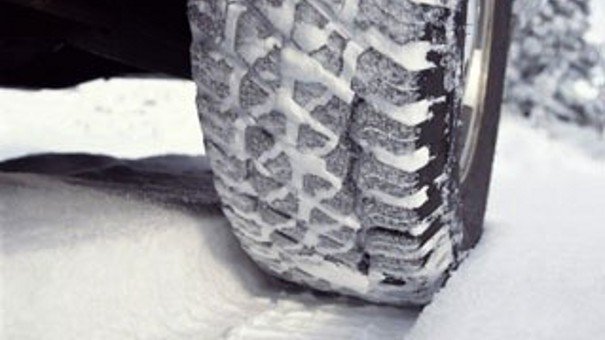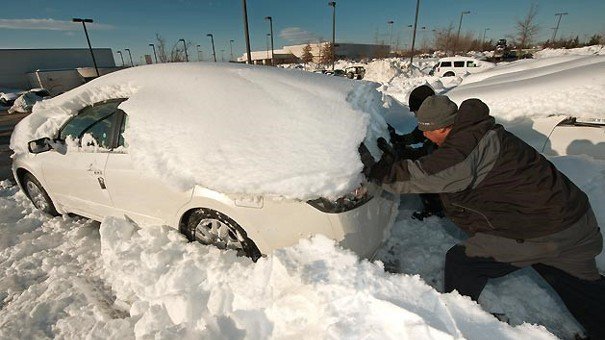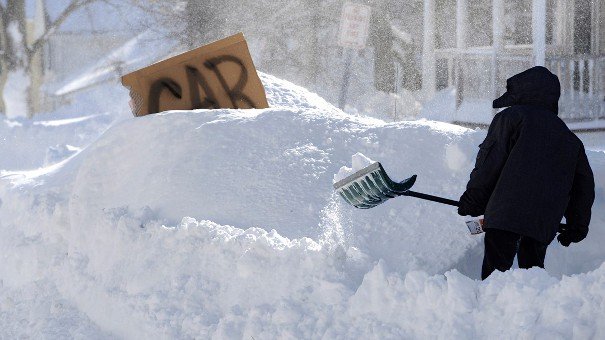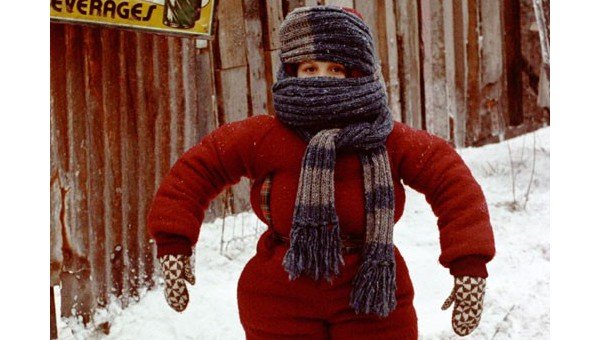
SIX COMMON DRIVING MISTAKES TO AVOID DURING THE WINTER

Doesn't matter how experienced you are as a driver, it's easy to commit perilous driving mistakes that can have big consequences, ESPECIALLY during the winter. Below are six common mistakes that drivers make during the cold weather season that you should avoid.
MISTAKE #1: Driving at an improper speed for road conditions ahead.
During ordinary weather, maintaining the posted speed limit is recommended for your safety, but during the winter, you may need to drive below the posted speed limit. In some states, you may even be pulled over for driving too quickly for the road conditions ahead.
PRO TIP: When driving on packed snow, drive at a speed that is a quarter of your normal driving speed for that area i.e. if you drive typically at 60 mph on a street, drive between 15 to 20 mph during or after a snowstorm.

MISTAKE #2: Slamming on your brakes when your vehicle starts to slide.
In emergency situations, you may slam on your brakes to avoid crashes or collisions. Sometimes, this technique is the best approach to ensure your safety. However, during the winter, there are various hazardous situations for which you will need to adopt a different technique. For example, when your vehicle is slipping on black ice, which is a thin layer of transparent ice that forms on wet streets after temperatures fall near or below freezing temperature, slamming on your brakes can worsen the situation and endanger you and any other passengers in your vehicle.
PRO TIP: If your vehicle begins slipping on ice, don’t slam on your brakes. Don’t slam on your gas pedal either. Instead, you should turn your wheel gently in the direction you want to go and step lightly on your brakes. This is the most effective way to maintain control of your vehicle in this situation.

MISTAKE #3: Forcing your vehicle’s tires to do too much.
On sunny, dry days, you may attempt to do more than one thing at once e.g. turning and braking your vehicle at the same time. On wet and slick roads, however, when you force the vehicle to do two or more things at a time, the risk of your tires losing traction and you losing control of your vehicle is greater.
PRO TIP: Be conscience of your movements while you are driving, and perform one task at a time—brake, then steer, then accelerate. By isolating these tasks and performing one at a time, you can prevent overburdening your tires and reduce the chances of your tires losing traction.

MISTAKE #4: Driving on back roads during or after snowfall.
Back roads may be apart of your routine shortcut to work or to the gym, but during the winter back roads can be dangerous. Roads get cleared of snow based on their size and use. Therefore, the conditions of small back roads can vary and present unexpected hazards. Additionally, because these roads have less traffic and are travelled upon less frequently, if you get stuck, you may have to wait longer for help.
PRO TIP: Sometimes, you have to drive in less than ideal weather. In these instances stick to the main roads and avoid back roads as much as possible. Before driving into harsh weather conditions, plan a route that will keep you on the main roads for most of the journey.

MISTAKE #5: Not preparing your vehicle for the winter.
PRO TIP: At the beginning of the winter season, store a safety kit of water, food, a blanket, flares, a first-aid kit, a phone charger and road salt.

MISTAKE #6: Driving while wearing your winter gear.
To drive efficiently, you depend on the easiness of your movement. If you’re wearing a bulky winter coat, your coat might reduce your ability to steer abruptly (to avoid a collision) and it can reduce your arm’s range of motion. Additionally, if you’re wearing heavy winter boots, you might not be able to feel the pedals underneath your feet. Some drivers have reported having their feet on both pedals at the same time and not noticing. Accidentally, depressing both pedals simultaneously can lead to you losing control of your vehicle.
PRO TIP: Carry a spare pair of shoes in your vehicle. Take off your bulky winter coats before you begin driving. Wear leather gloves instead of wool or cotton. Never drive with the hood of your coat up. While you’re driving, wear clothes that will allow you to move and steer freely and efficiently.
